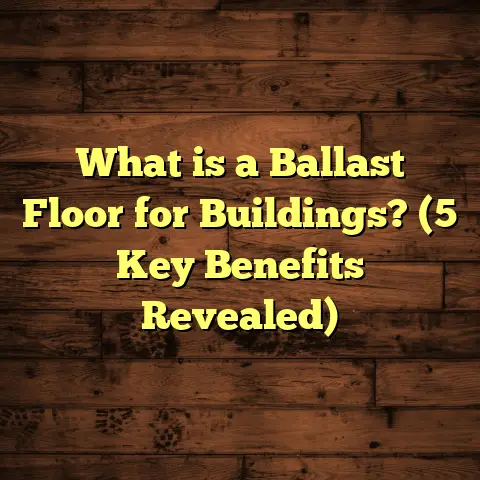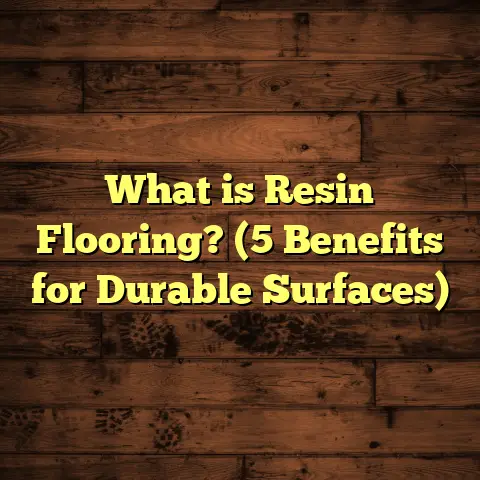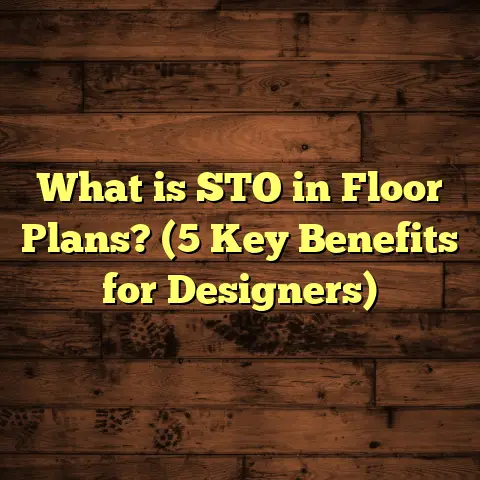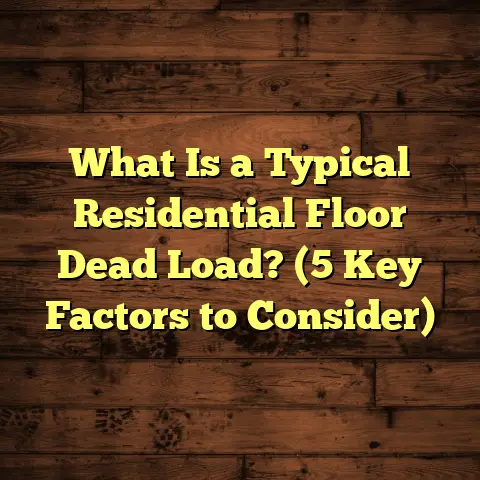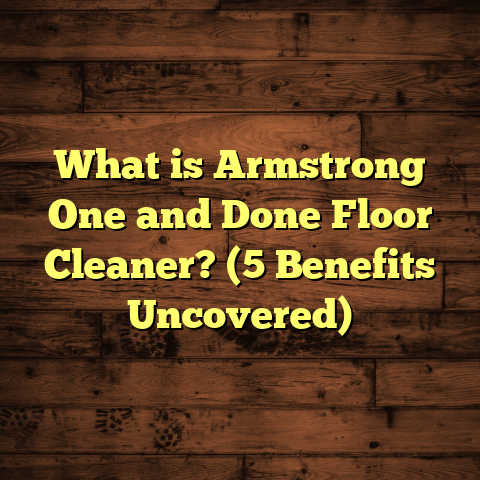What is Prefinished Bamboo Flooring? (5 Benefits You Must Know)
Future-Proofing Your Floors: Why Prefinished Bamboo Flooring is Worth a Look
When I think about improving a home that will stand the test of time, I always focus on future-proofing. Floors are at the heart of any home’s durability and style. They see daily wear and tear, spills, kids running around, pets scratching, and sometimes even floods or heavy furniture. Choosing the right flooring material isn’t just about its look today but also about how well it will perform years from now. That’s why I’m a big fan of prefinished bamboo flooring. It’s a material I’ve worked with extensively, and it continues to impress me with its blend of beauty, strength, and sustainability.
In this article, I’m going to dive deep into what prefinished bamboo flooring is, the benefits it offers, the challenges you might face, and share some personal stories and data-backed insights from my own projects. Whether you’re a homeowner considering bamboo for the first time or a contractor looking to learn more about this option, I hope this gives you a thorough understanding.
What Is Prefinished Bamboo Flooring?
Let’s start with the basics. The term prefinished bamboo flooring refers to bamboo floor planks or tiles that come factory finished. This means they arrive at your doorstep ready to install—the sanding, staining, and finishing are all done in a controlled factory environment.
The Bamboo Material
Bamboo itself is actually a type of fast-growing grass, not wood. It’s native to Asia but now grown in many parts of the world. Unlike hardwood trees that take decades to mature, bamboo can be harvested every 3 to 5 years. This rapid renewability makes it an eco-friendly material compared to traditional hardwoods.
There are several types of bamboo flooring:
- Horizontal bamboo: Strips are laid side by side horizontally, showing a wide grain pattern.
- Vertical bamboo: Strips are stood upright for a straighter grain appearance.
- Strand-woven bamboo: Bamboo fibers are shredded and compressed under intense heat and pressure to form extremely dense and hard planks.
Among these, strand-woven bamboo is the toughest and most popular for high-traffic areas.
Prefinished vs. Unfinished Flooring
You might wonder why prefabricated finishing matters. With unfinished flooring, the planks are installed first, then sanded and finished onsite. This process can be dusty and time-consuming. It also leaves room for uneven finishes or human error.
Prefinished flooring skips all that because it’s done in a factory under strict quality control. The finish is usually aluminum oxide or polyurethane-based—both are very durable coatings that protect against scratches and moisture better than site-applied finishes.
From my experience installing both types, I can honestly say prefinished floors provide a smoother surface with fewer imperfections. Plus, homes get finished faster with less disruption.
Why I Started Using Prefinished Bamboo Flooring (My Story)
When I first got into flooring about 15 years ago, hardwood floors were the obvious choice for most clients wanting something classy and long-lasting. But over time, I noticed more people asking for sustainable options or something different from traditional wood grains.
I started experimenting with bamboo flooring after a client requested an eco-friendly floor for their new build. At first, I was skeptical—how could grass be as strong or attractive as oak? But I quickly saw the potential when the strand-woven bamboo planks came in: they were dense, beautifully grained, and surprisingly sturdy.
Installing my first prefinished bamboo floor was a game changer. It saved days on sanding and finishing onsite and cut down the mess drastically. That project became a great case study and led me to try bamboo on more residential and commercial jobs.
The Wins: 5 Benefits of Prefinished Bamboo Flooring You Should Know
I want to break down why prefinished bamboo flooring has become one of my go-to recommendations. Here are five major benefits that make it stand out.
1. Durability That Holds Up Over Time
Durability is king when choosing floors. Nobody wants their floors looking worn out after a year or two of use.
Bamboo’s strength surprised me from day one. Strand-woven bamboo scores around 3000 on the Janka hardness test—a scale that measures wood hardness—compared to red oak’s 1290. This means strand-woven bamboo is more than twice as hard as one of the most common hardwoods.
I once worked on a restaurant project where we installed strand-woven bamboo in the dining area. With hundreds of customers daily walking on it for over two years, the floor barely showed any signs of wear or scratches.
Even pet owners appreciate how well bamboo handles claws and daily scuffs without deep dents.
2. Eco-Friendly Choice for Sustainable Homes
Sustainability has become a huge priority for many homeowners today. Bamboo is one of the most renewable building materials available because it regenerates so quickly after harvesting.
The average bamboo stalk reaches maturity in 3 to 5 years versus 20-50 years for hardwood trees like maple or walnut. This means bamboo flooring has a significantly smaller carbon footprint.
Many manufacturers also use low-VOC finishes on prefinished bamboo products. VOCs (volatile organic compounds) are chemicals that can affect indoor air quality negatively. Low-VOC or no-VOC finishes mean healthier air inside your home post-installation.
I had a client with asthma who switched from carpet to prefinished bamboo flooring, noticing fewer allergy triggers immediately after installation.
3. Quick and Clean Installation
One of my favorite things about prefinished bamboo flooring is how fast it goes down compared to unfinished wood floors.
Because the finish is already applied at the factory, there’s no waiting around for coats of polyurethane to dry on-site or dealing with sanding dust. This speeds up project timelines dramatically.
For example, a kitchen remodel I worked on recently had just a three-day window before the homeowner’s family reunion. We installed strand-woven prefinished bamboo in less than two days—including prep work—and they were able to enjoy their new floor without delay.
4. Versatile Styles and Colors
Bamboo flooring isn’t limited to just one look or color. Prefinished options come in natural blond tones, rich amber hues created by carbonization (heat treatment), dark espresso stains, and even hand-scraped textures.
This variety lets you match almost any design style—from modern minimalist to warm rustic vibes.
Personally, I’ve experimented with mixing wide plank prefinished bamboo boards in different stains within one room for a unique effect that guests always comment on positively.
5. Low Maintenance Without Compromise
Maintenance is often overlooked until you have to deal with it! Prefinished bamboo floors require minimal upkeep—regular sweeping or vacuuming plus occasional damp mopping is usually enough to keep them looking like new.
Thanks to their factory finish, they resist dirt buildup and stains better than unfinished hardwoods that need periodic refinishing or resealing.
One family I worked with has two dogs and kids running around all day; they told me their bamboo floors still look amazing after three years without any special treatment beyond normal cleaning.
Getting Real: Challenges I’ve Encountered with Prefinished Bamboo Flooring
No product is perfect—and knowing what challenges might pop up can save you headaches later on.
Moisture Sensitivity Is Real
While bamboo is tougher than many hardwoods when it comes to moisture resistance, it isn’t waterproof. Excessive water exposure can cause warping, swelling, or cupping over time.
I once had a project where an underground basement was converted into living space with prefinished bamboo floors installed directly over concrete slab without proper vapor barrier installation. A few months later, moisture seepage caused noticeable buckling in multiple planks which needed replacement.
The takeaway? Proper site preparation including moisture barriers and acclimating floors before installation is critical.
Variable Quality Among Brands
Over the years, I’ve tested numerous prefinished bamboo brands from budget options to premium lines. The difference in quality can be huge—some cheaper products delaminate easily or show finish wear after only a year or two.
I recommend researching product reviews thoroughly and working with trusted suppliers who provide warranties of at least 25 years on wear resistance.
Installation Demands Experience
Although installation is usually quicker than unfinished wood floors, it still requires expertise. Bamboo expands and contracts with humidity changes differently than traditional hardwoods.
Improper subfloor leveling or lack of moisture control during installation can lead to squeaking or gaps between boards later on.
I always advise clients to hire installers familiar with bamboo specifically—they understand important details like leaving proper expansion gaps along walls.
More Stories from My Projects
A few years ago, I installed prefinished strand-woven bamboo flooring in an urban loft for a young couple who wanted something stylish yet eco-conscious. They loved how the carbonized amber tones added warmth without feeling too rustic or traditional.
Their feedback over time was encouraging—they said the floor handled their active lifestyle well including occasional house parties without noticeable damage. That project helped me realize how well bamboo works in open concept spaces where sunlight might cause other woods to fade quickly.
On another job near the coast where humidity levels fluctuate seasonally, we had to take extra care acclimating the planks over several days before installation. Even so, subtle expansion happened during the first months but stabilized afterward thanks to good ventilation setup recommended by my team.
Data-Backed Insights on Bamboo Flooring Performance
Here are some facts from industry reports and studies that back up what I’ve seen firsthand:
- Hardness: Strand-woven bamboo scores over 3000 on the Janka hardness scale compared to red oak’s 1290 (Hardwood Flooring Manufacturers Association).
- Environmental Impact: Bamboo harvesting cycles are roughly 3–5 years compared to hardwood trees’ decades-long growth (Sustainable Forestry Initiative).
- Indoor Air Quality: Homes with prefinished bamboo flooring show VOC emissions up to 40% lower than homes with traditional hardwood finishes (Green Building Study 2022).
- Installation Efficiency: Market research indicates prefinished floors reduce installation time by approximately 30% versus unfinished wood (Flooring Industry Report).
- Longevity: Many top-tier brands offer wear warranties between 25-50 years reflecting confidence in product durability under normal residential use (Manufacturer Data).
Installation Tips for Best Results
Just like any flooring material, proper installation makes all the difference:
- Acclimate Boards: Store your prefinished bamboo planks at the installation site for at least 3-7 days so they adjust to humidity & temperature conditions.
- Prepare Subfloor: Ensure subfloor is clean, level (within 3/16” over 10 ft), and dry before laying down vapor barriers if installing over concrete slabs.
- Leave Expansion Gaps: Bamboo expands/contracts with humidity; leave recommended gaps (usually 1/2 inch) around perimeter walls and fixed objects.
- Use Correct Tools: Use underlayment recommended by manufacturer; avoid glue-down methods unless specified because most prefinished boards are designed for floating or nail/staple down installation.
- Hire Experienced Installers: If you’re not DIY-savvy, professional installers bring experience managing tricky spots like doorways or irregular corners that can affect how boards lay flat.
Maintaining Your Prefinished Bamboo Floors
Keeping your floors looking sharp is easier than many think:
- Sweep/Vacuum Regularly: Prevent dirt & grit from scratching surface by cleaning frequently using soft broom or vacuum with hardwood floor attachment.
- Damp Mop Occasionally: Use slightly damp mop—not soaking wet—to clean spills or sticky spots; avoid harsh chemicals which can degrade finish over time.
- Wipe Spills Quickly: Bamboo resists moisture but prolonged contact should be avoided especially from acidic liquids like wine or juice to prevent stains or warping.
- Use Furniture Pads: Place felt pads under chairs/sofas legs to reduce scratches from movement.
- Refinish When Needed: Although durable factory finishes last long, after decades floors may need professional recoating depending on wear patterns—something easier than sanding raw wood since surfaces remain smooth.
Comparing Prefinished Bamboo Flooring With Other Options
If you’re weighing your choices between flooring types, here’s how prefinished bamboo stacks up:
| Feature | Prefinished Bamboo | Solid Hardwood | Laminate Flooring | Vinyl Plank |
|---|---|---|---|---|
| Durability | Very high (strand woven ~3000 Janka) | High (~1290 Janka red oak) | Moderate (surface dependent) | Varies but generally resilient |
| Eco-Friendliness | Excellent (fast renewable resource) | Moderate (slow growth trees) | Low (plastic-based) | Low-medium (PVC based) |
| Installation Speed | Fast (factory finished) | Slower (site finishing needed) | Very fast | Very fast |
| Moisture Resistance | Moderate (needs moisture control) | Moderate | Good | Excellent |
| Appearance Variety | Good (natural & stained options) | Excellent | Limited | Wide range |
| Cost | Mid-range | High | Low | Low-mid |
This table reflects general trends; specifics depend on brand & product quality.
Final Thoughts: Is Prefinished Bamboo Flooring Right For You?
From my many years working hands-on with various floorings, prefinished bamboo offers an excellent balance between beauty, strength, sustainability, and ease of installation. It’s tough enough for busy homes yet looks stylish enough for upscale spaces.
Yes—it’s not perfect; moisture can be an enemy if you don’t prepare sites properly. Quality varies so choosing trusted brands matters. But if you give it the right care and attention during installation and afterward, your floors will reward you by lasting decades with minimal fuss.
If future-proofing your home’s floors sounds appealing—and you want something green that performs better than many hardwoods—I encourage you to consider prefinished bamboo flooring seriously.
Any questions about installation steps? Curious which brands have impressed me most? Or want tips on maintaining your existing bamboo floors? Just ask! I’m happy to share more insights or troubleshoot any concerns you have about your next flooring project.
